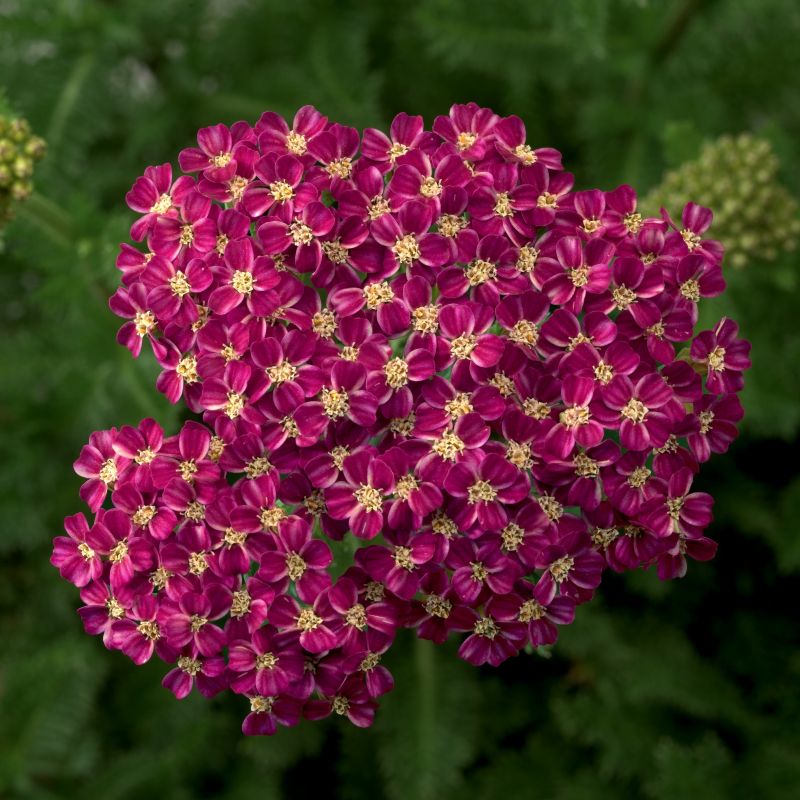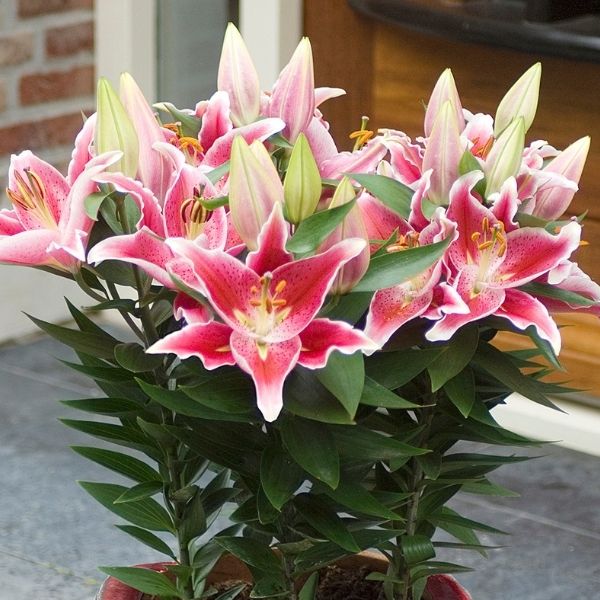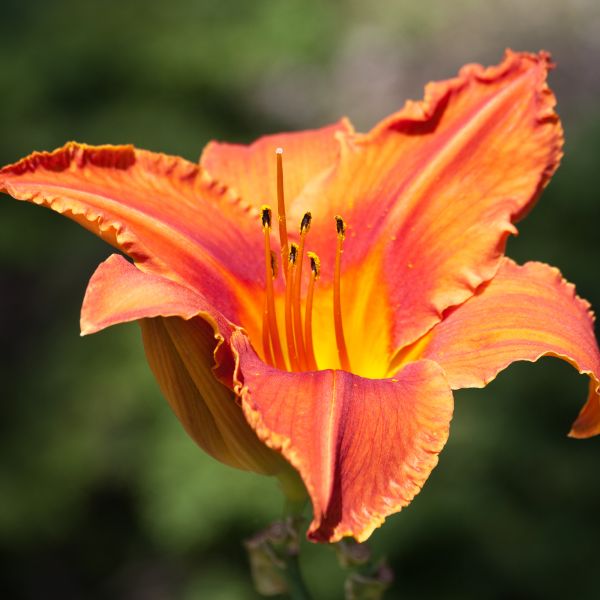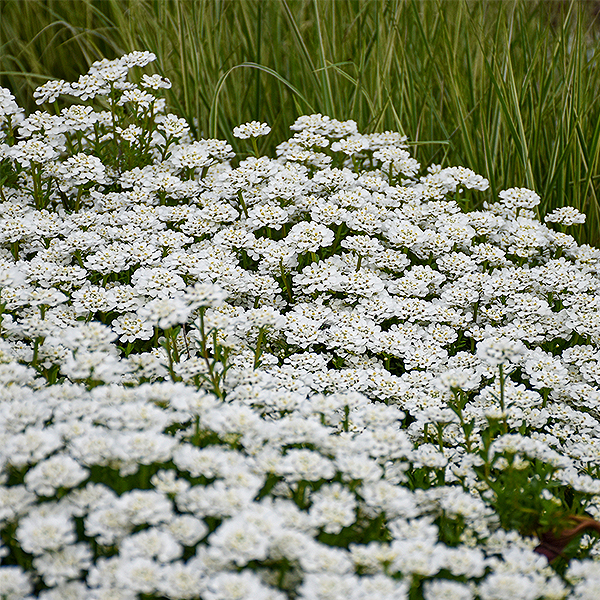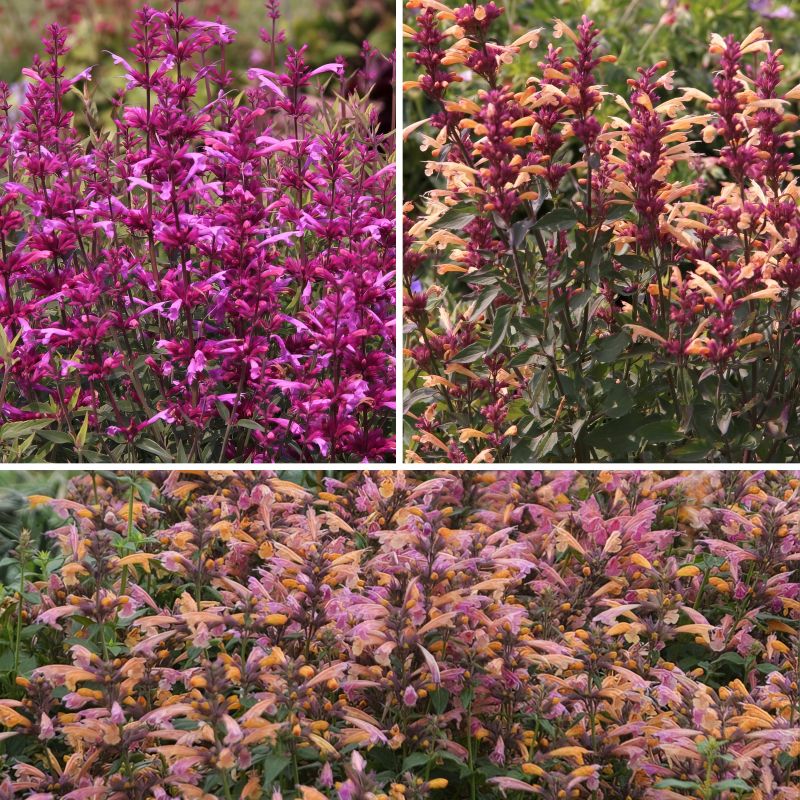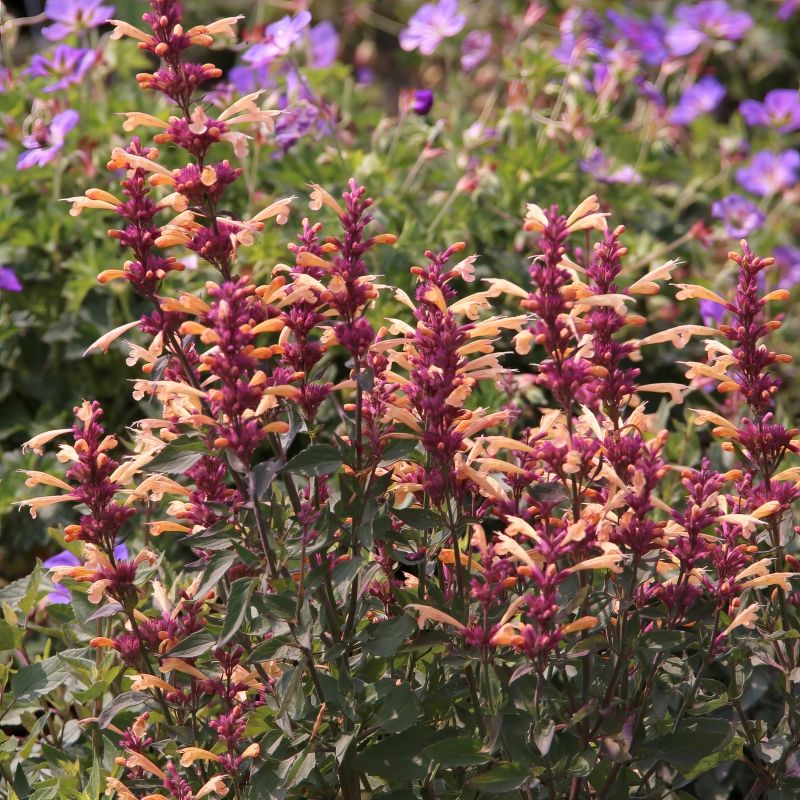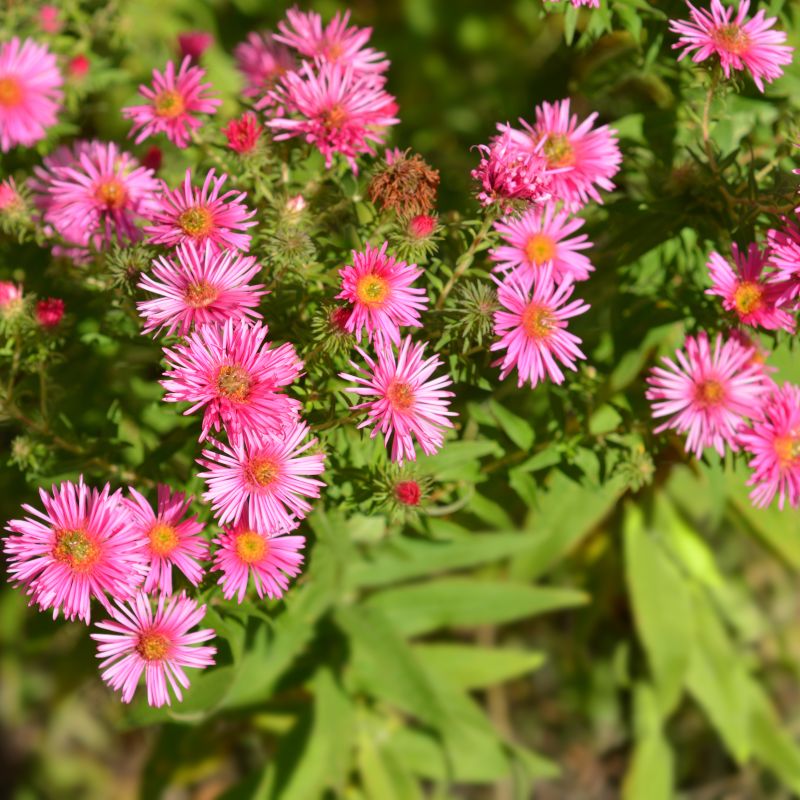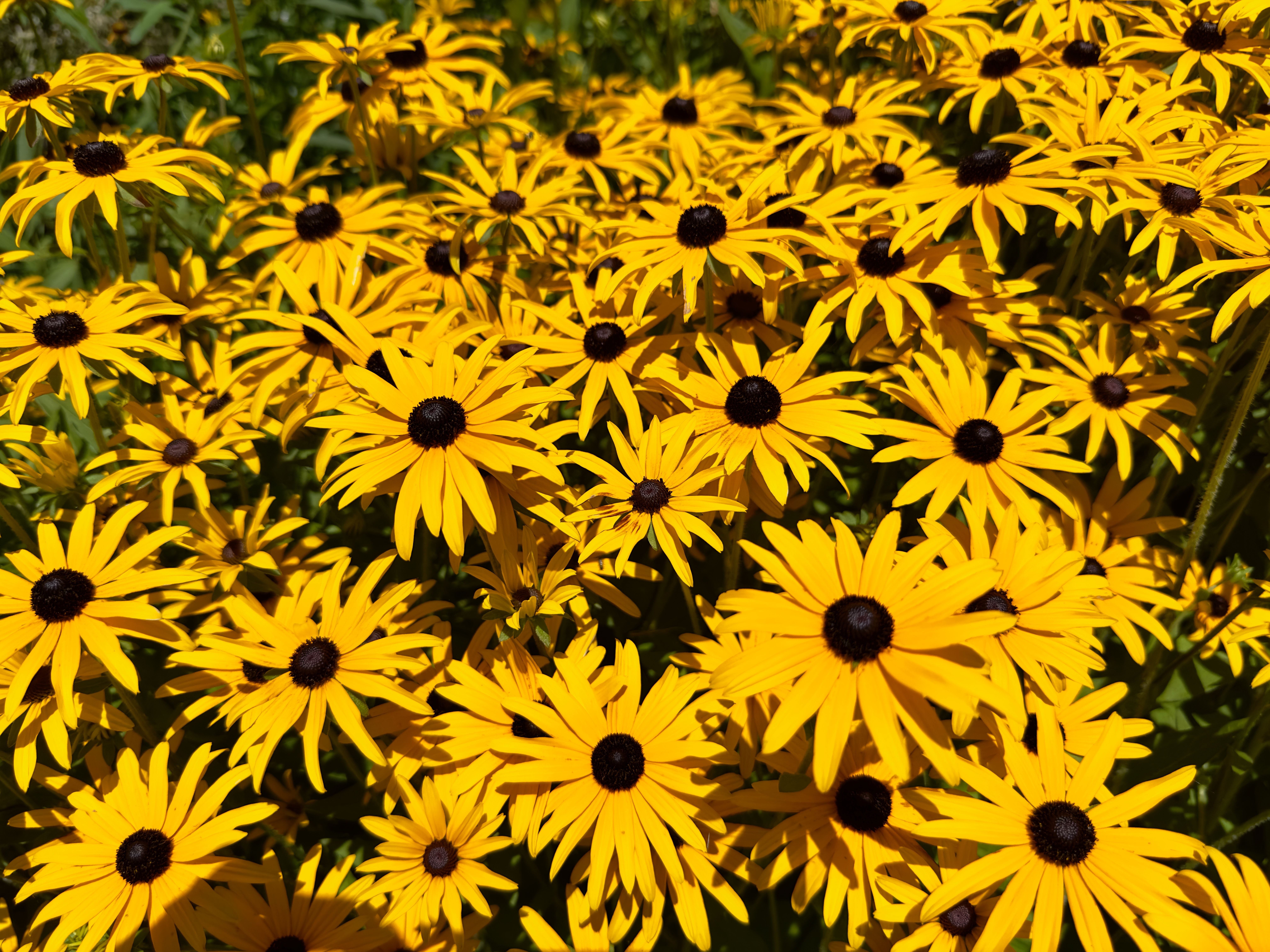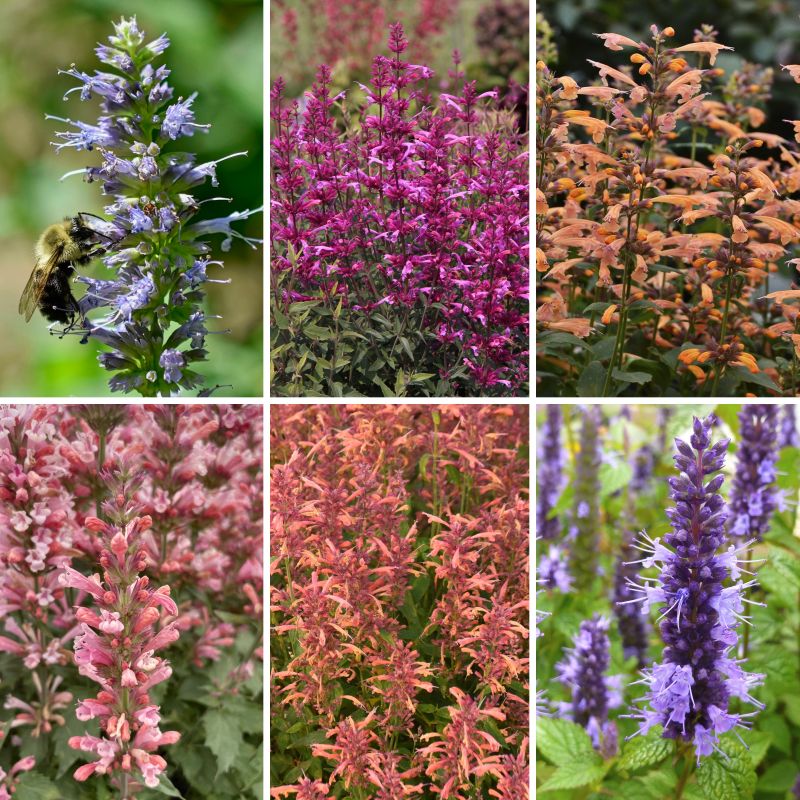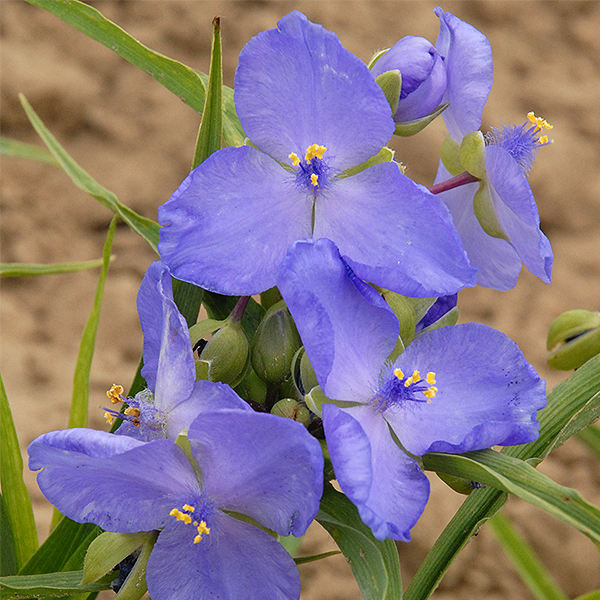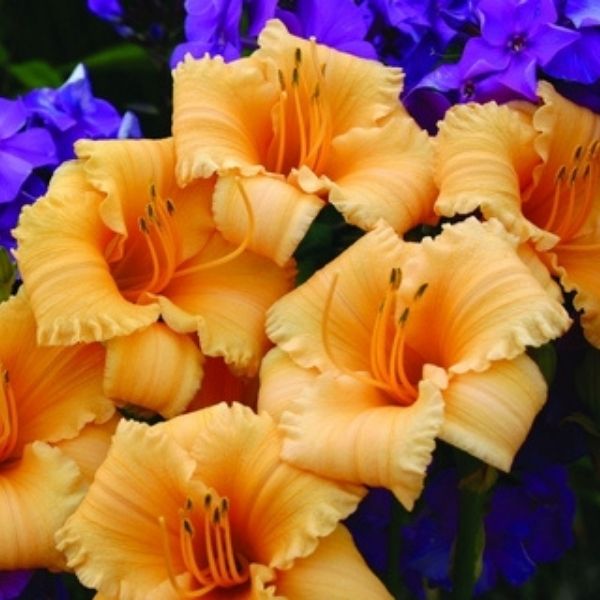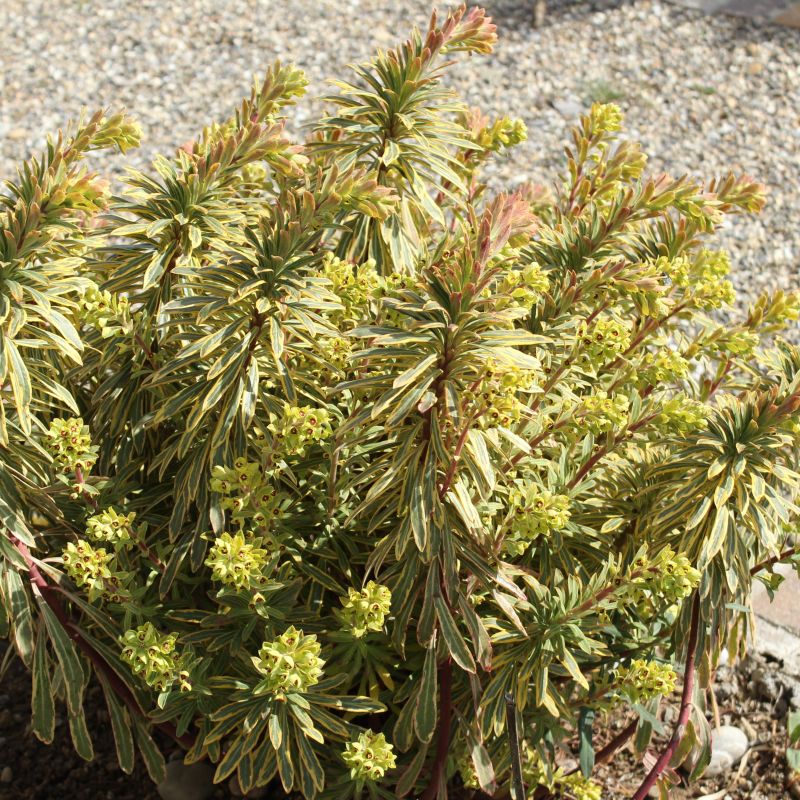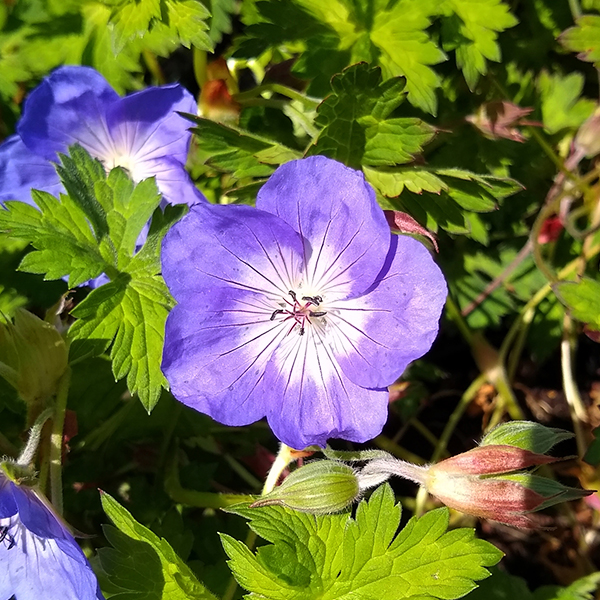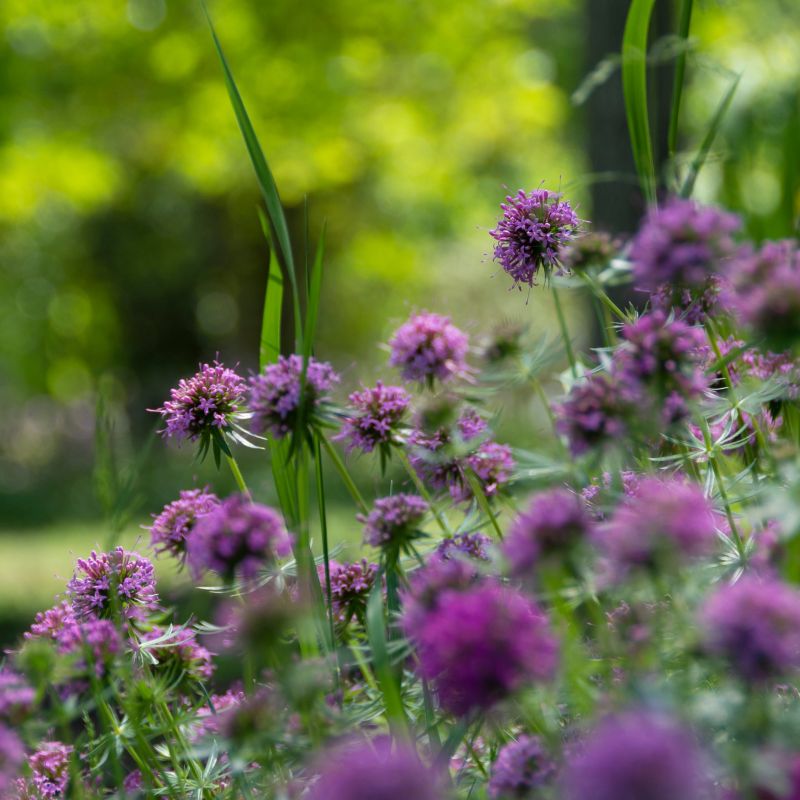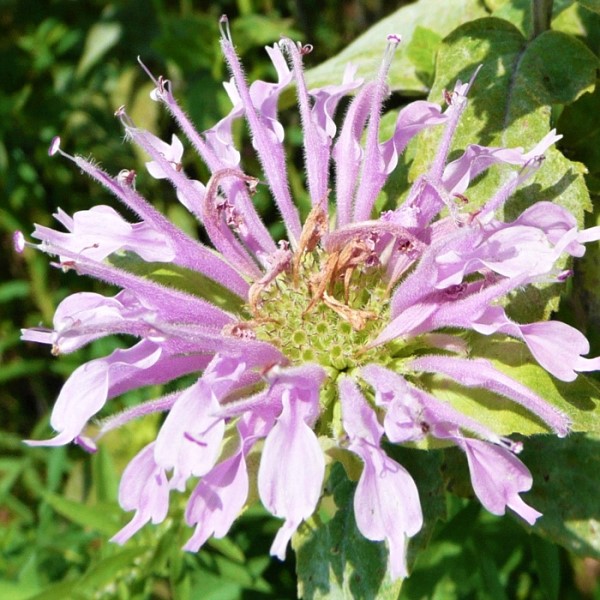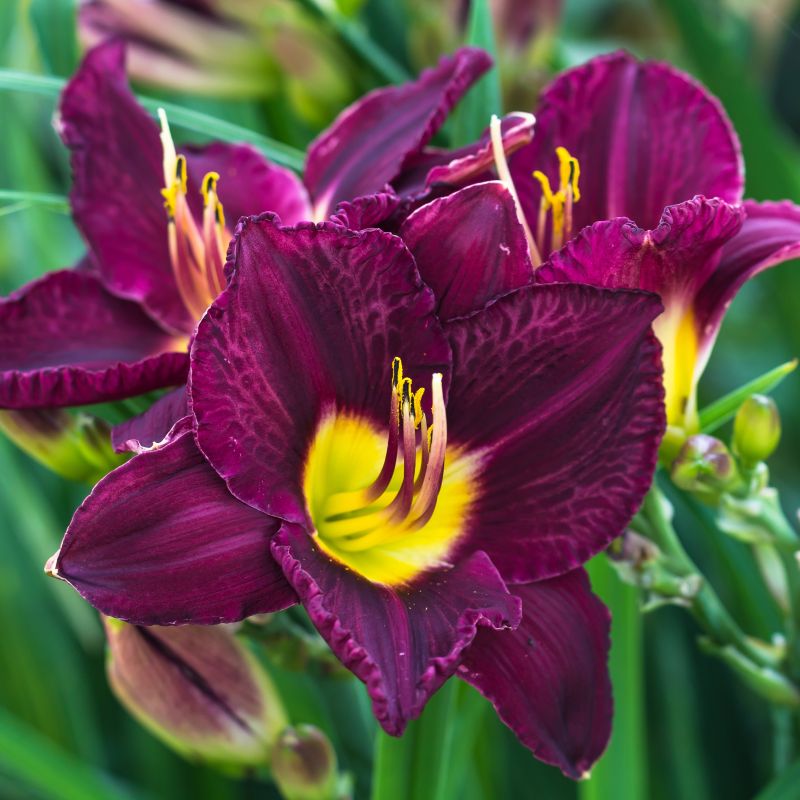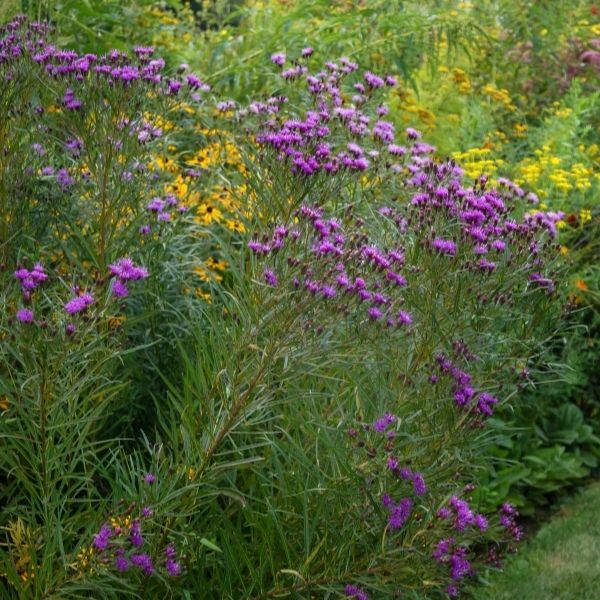
Iron Butterfly Ironweed
Vernonia lettermannii 'Iron Butterfly'
19 reviews
Iron Butterfly Ironweed
Vernonia lettermannii 'Iron Butterfly'
19 reviews
- Grows well in sunny locations
- Beautiful purple blooms add color to your garden
- Drought tolerant and low maintenance
$56.00
$80.00
30% Off
- Ships to 43215 in 3 to 7 days
- Free Shipping Over $150
- Plant Arrival Guarantee
- In Stock
- Free Plant Consult
$200
1.5 Gallon
Why Iron Butterfly Ironweed?
Iron Butterfly Ironweed (Vernonia lettermannii 'Iron Butterfly') is a captivating perennial known for its distinctive narrow foliage and showy purple blooms. This tough and resilient plant thrives in sunny areas with well-drained soil, making it a perfect addition to garden borders or containers. With its compact size and abundance of flowers, Iron Butterfly Ironweed adds beauty and interest to any landscape while attracting butterflies and pollinators.
People who loved this plant also bought
Sunlight
Iron Butterfly Ironweed requires full sun to thrive and develop its vibrant purple flowers.
Watering
Iron Butterfly Ironweed (Vernonia lettermannii) has low to moderate water needs. It prefers well-drained soil and should be watered regularly during dry periods. However, it is drought-tolerant once established and can withstand short periods of water scar
Fertilizing
The fertilizer requirement for Iron Butterfly Ironweed is not specified. It is recommended to use a balanced, all-purpose fertilizer according to the instructions on the package or consult with a local horticulturist for specific plant nutrition needs.
Iron Butterfly Ironweed (Vernonia lettermannii 'Iron Butterfly')
The Iron Butterfly Ironweed, scientifically known as Vernonia lettermannii 'Iron Butterfly', is a small perennial plant that exhibits exceptional foliage and stunning blooms. It is a popular choice among gardening enthusiasts due to its unique characteristics and versatility in garden designs.
This compact perennial boasts dense, fine-textured foliage that forms a bushy mound, bringing a touch of elegance to any landscape. The narrow, lance-shaped leaves are dark green, creating a rich backdrop to showcase the vibrant flowers.
The real show-stopper of the Iron Butterfly Ironweed is its charming and abundant blooms. From late summer through fall, the plant produces clusters of tiny, vibrant purple flowers that form a lovely cloud of color. These delicate blooms are adored by butterflies, bees, and other pollinators, making this plant an excellent addition to pollinator gardens.
Growing up to 18 inches tall with a spread of 12 inches, this compact perennial is perfect for small gardens, mixed borders, and containers. Its neat and tidy growth habit also makes it suitable for edging pathways or lining garden beds.
The Iron Butterfly Ironweed thrives in full sun or partial shade, tolerating a range of soil types, from clay to loam. It is known for its exceptional drought tolerance, making it an excellent choice for gardeners seeking low-maintenance plants. This perennial is also deer-resistant, adding another layer of appeal for those with browsing wildlife in their area.
When it comes to care, the Iron Butterfly Ironweed is fairly easy to grow. Regular watering during its establishment period is recommended, but once established, it can withstand dry spells. It typically does not require much pruning, but occasionally trimming back spent flowers can promote additional blooming.
The Iron Butterfly Ironweed is not only a beautiful addition to any garden but also a valuable plant for attracting pollinators and supporting biodiversity. With its compact size, stunning foliage, and profusion of vibrant flowers, this plant is sure to provide year-round interest and beauty to your outdoor spaces.
Plant Information:
| Botanical Name: | Vernonia lettermannii 'Iron Butterfly' |
| USDA Zones: | 4 - 9 |
| Water: | Low Once Established |
| Exposure: | Full Sun |
| Soil Needs: | Well Drained |
| Mature Height: | 18 - 24 inches |
| Mature Spread: | 18 - 24 inches |







Pollination Info
Pollination Information for Iron Butterfly Ironweed (Vernonia lettermannii 'Iron Butterfly')
In order to understand the pollination requirements of Iron Butterfly Ironweed, it is important to learn about its flower structure and the agents involved in its pollination process.
Flower Structure
Iron Butterfly Ironweed produces small, clustered flowers that are arranged in flat-topped clusters (corymbs). Each flower consists of the following parts:
- Petals: The flowers have tubular petals that are typically purple in color.
- Stamens: These are the male reproductive parts of the flower and consist of the filament and anther. The anthers contain the pollen grains which are produced to fertilize the ovules.
- Pistil: The female reproductive part of the flower which includes the stigma, style, and ovary. The stigma is sticky to catch and receive pollen.
Pollination Mechanisms
Iron Butterfly Ironweed relies on pollinators to transfer pollen between flowers. The main mechanisms of pollination in this plant are:
- Insect Pollination: The tubular flowers are specially adapted to attract and accommodate various insect pollinators, such as bees, butterflies, moths, and beetles. These insects are attracted by the flower's vibrant color, nectar reward, and fragrance. When these insects visit the flowers in search of nectar, they inadvertently brush against the anthers, picking up pollen grains. As they move from flower to flower, some of the pollen is transferred to the stigma, leading to cross-pollination and fertilization.
- Wind Pollination: Although primarily an insect-pollinated plant, Iron Butterfly Ironweed may also experience some degree of wind pollination. In this case, the plant releases a large amount of lightweight pollen into the air, and some of it may be carried by the wind to neighboring flowers.
Pollinator Conservation
As Iron Butterfly Ironweed heavily relies on insect pollinators for its reproductive success, it is important to create a pollinator-friendly environment to support their populations. Some tips for conserving pollinators and promoting successful pollination in your garden include:
- Plant a diverse range of flowering plants that bloom at different times to provide a continuous source of nectar and pollen.
- Avoid the use of pesticides, especially during the flowering period, to protect pollinators from harmful chemicals.
- Provide nesting sites and shelter for pollinators by incorporating features such as bee houses, butterfly host plants, and native plantings.
By understanding the pollination requirements and promoting a pollinator-friendly environment, you can enhance the growth and reproductive success of Iron Butterfly Ironweed in your garden.
FAQ
Iron Butterfly Ironweed (Vernonia lettermannii 'Iron Butterfly') FAQs
1. What is Iron Butterfly Ironweed?
Iron Butterfly Ironweed (Vernonia lettermannii 'Iron Butterfly') is a perennial flowering plant that belongs to the Asteraceae family. It is known for its finely dissected foliage and compact form, making it a popular choice for gardens and landscapes.
2. How tall does Iron Butterfly Ironweed grow?
Iron Butterfly Ironweed typically grows to a height of around 18-24 inches (45-60 cm) and has a spread of 12-18 inches (30-45 cm). It forms a dense clump of foliage, giving it a compact appearance.
3. What are the preferred growing conditions for Iron Butterfly Ironweed?
Iron Butterfly Ironweed thrives in well-drained soils and prefers full sun to partial shade. It is relatively tolerant of various soil types but prefers slightly acidic to neutral soil pH. This plant is known for its drought tolerance once established, but regular watering during dry periods is beneficial.
4. When does Iron Butterfly Ironweed bloom?
The Iron Butterfly Ironweed produces small, lavender-purple flowers that bloom from late summer to early fall. These vibrant flowers attract butterflies and other pollinators, making it a great addition to pollinator gardens.
5. How do I care for Iron Butterfly Ironweed?
To care for Iron Butterfly Ironweed, it is recommended to trim back the plant in early spring to encourage compact growth and promote better flowering. Regular deadheading of faded flowers is beneficial to prolong the blooming period. This plant is relatively low-maintenance and does not require extensive pruning or fertilization.
6. Is Iron Butterfly Ironweed deer resistant?
Yes, Iron Butterfly Ironweed is considered deer resistant. It contains compounds that are unappealing to deer, reducing the likelihood of grazing.
7. Can I divide Iron Butterfly Ironweed?
Yes, Iron Butterfly Ironweed can be divided in early spring or early fall. Dig up the clump and separate it gently into smaller sections, each with a portion of the root system. Replant the divisions in prepared soil, water thoroughly, and provide appropriate care until they establish.
8. Are there any potential pest or disease problems with Iron Butterfly Ironweed?
Iron Butterfly Ironweed is generally resistant to most pests and diseases. However, it may be susceptible to aphids, spider mites, or powdery mildew in certain conditions. Regular monitoring and appropriate treatment can help prevent or manage these issues.
9. Can Iron Butterfly Ironweed be grown in containers?
Yes, Iron Butterfly Ironweed can be grown in containers, but it is important to choose a container with adequate drainage. Use a high-quality potting mix and ensure the plant receives sufficient sunlight. Regular watering and fertilization may be required for container-grown plants.
10. What are some companion plants for Iron Butterfly Ironweed?
Iron Butterfly Ironweed can be paired with other sun-loving perennials and grasses such as Echinacea, Coreopsis, Salvia, Rudbeckia, Penstemon, and Panicum. These combinations create visually appealing and ecologically beneficial garden compositions.
Planting & Care
Planting & Care for Iron Butterfly Ironweed
Planting
- Choose a location with full sun to partial shade.
- Prepare the soil by removing any weeds or grass and loosening it with a garden fork.
- Dig a hole that is slightly larger than the root ball of the plant.
- Place the Iron Butterfly Ironweed in the hole, making sure the top of the root ball is level with the surrounding soil.
- Backfill the hole with soil, lightly tamping it down around the plant to remove any air pockets.
- Water the plant thoroughly after planting.
Care
- Water regularly during the first growing season to establish a deep, extensive root system.
- After establishment, Iron Butterfly Ironweed is relatively drought-tolerant, but still benefits from occasional watering during prolonged dry periods.
- Apply a layer of mulch around the plant to help retain soil moisture and suppress weed growth.
- Prune back the plant in early spring to encourage bushier growth and remove any dead or damaged stems.
- Fertilize in early spring with a balanced, slow-release fertilizer according to package instructions.
- Monitor for common pests such as aphids or leaf spot diseases, and treat as necessary with organic or chemical remedies.
- Divide the plant every few years in early spring to maintain its vigor and promote new growth.
- Consider staking taller varieties to provide support and prevent flopping.
Check Out These Verified Customer Reviews:
Customer Reviews
4.7 out of 5 based on 19 reviews
Thank you! Your review has been submitted.
Impressed with customer service.
Great customer service - they were quick to respond to my questions about the Iron Butterfly Ironweed.
I absolutely love my Iron Butterfly Ironweed! It arrived in perfect condition and the quality is exceptional. The website was easy to navigate and the shipment arrived on time. Overall, a fantastic experience!
Item has been added to your cart.




